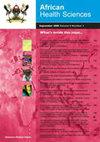尼日利亚拉各斯城市公立医院紧急剖腹产的发生率、影响因素和结果
IF 0.9
4区 医学
Q3 MEDICINE, GENERAL & INTERNAL
引用次数: 0
摘要
背景:在紧急情况下进行剖腹产(CS)可以挽救孕妇和胎儿的生命。据估计,尼日利亚全国的剖腹产率为 2.7%,西南部地区的剖腹产率最高,为 7.0%。我们在这项基于医疗机构的回顾性横断面研究中,旨在描述尼日利亚拉各斯的急诊CS模式并评估其因素、产科指征和结果。 研究方法:从病例记录中提取孕妇的社会人口学、旅行和产科数据。将旅行数据输入谷歌地图,提取孕妇从家到医院的旅行时间。进行了单变量、双变量和多变量逻辑回归分析。 结果:在纳入的 3,134 名孕妇中,1,923 人(61%)通过急诊 CS 分娩。在预约分娩(OR=1.97,95%CI 1.64-2.35)、难产(OR=2.59,95%CI 1.68-3.99)、子痫前期/子痫(OR=1.67,95%CI 1.08-2.56)、多胎妊娠(OR=2.71,95%CI 1.72-4.28)和来自郊区(OR=1.43,95%CI 1.15-1.78)的孕妇中,发生急诊CS的几率明显更高。前往医院的时间与急诊CS之间存在递增的剂量效应反应。 结论:要优化急诊手术率,需要在怀孕和分娩期间采取多管齐下的方法,尤其要重视为居住在郊区的孕妇提供支持。 关键词剖腹产;产科急诊;流行率;因素;城市;尼日利亚。本文章由计算机程序翻译,如有差异,请以英文原文为准。
Prevalence, influencing factors, and outcomes of emergency caesarean section in public hospitals situated in the urban state of Lagos, Nigeria
Background: Caesarean section (CS) performed in an emergency can be life-saving for both the pregnant woman and her baby. In Nigeria, CS rates have been estimated to be 2.7% nationally, with the highest regional rate of 7.0% reported in the South-West of the country. Our objective in this facility-based retrospective cross-sectional study was to describe patterns and assess factors, obstetric indications, and outcomes of emergency CS in Lagos, Nigeria. Methods: Socio-demographic, travel, and obstetric data of pregnant women were extracted from case notes. Travel data was inputted in Google Maps to extract travel time from the pregnant women’ home to the hospital. Univariate, bivariate and multivariable logistic regression analyses were conducted. Results: Of the 3,134 included pregnant women, 1,923 (61%) delivered via emergency CS. The odds of an emergency CS were significantly higher among women who were booked (OR=1.97, 95%CI 1.64–2.35), presented with obstructed labour (OR=2.59, 95%CI 1.68–3.99), pre-eclampsia/eclampsia (OR=1.67, 95%CI 1.08–2.56), multiple gestations (OR=2.71, 95%CI 1.72–4.28) and travelled from suburban areas (OR=1.43, 95%CI 1.15–1.78). There was an increasing dose-effect response between travel time to the hospital and emergency CS. Conclusion: Optimisation of CS rates requires a multi-pronged approach during pregnancy and childbirth, with particular emphasis on supporting pregnant women living in the suburbs. Keywords: Caesarean section; emergency obstetric care; prevalence; factors; urban; Nigeria.
求助全文
通过发布文献求助,成功后即可免费获取论文全文。
去求助
来源期刊

African Health Sciences
MEDICINE, GENERAL & INTERNAL-
CiteScore
2.30
自引率
0.00%
发文量
179
审稿时长
>12 weeks
期刊介绍:
The African Health Sciences is an internationally refereed journal publishing original articles on research, clinical practice, public health, policy, planning, implementation and evaluation, in the health and related sciences relevant to Africa and the tropics. Its objectives are to: Advocate for and promote the growth of reading culture in sub Saharan Africa; Provide a high quality journal in which health and policy and other researchers and practitioners in the region can and world wide, can publish their work; Promote relevant health system research and publication in the region including alternative means of health care financing, the burden of and solution of health problems in marginalized urban and rural communities amongst the displaced and others affected by conflict; Promote research and the systematic collection and collation and publication of data on diseases and conditions of equity and influence; Promote development of evidence-based policies and guidelines for clinical, public health and other practitioners. African Health Sciences acknowledges support provided by the African Health Journals Partnership Project that is funded by the US National Institutes of Health (through the National Library of Medicine and the Fogarty International Center) and facilitated by the Council of Science Editors.
 求助内容:
求助内容: 应助结果提醒方式:
应助结果提醒方式:


